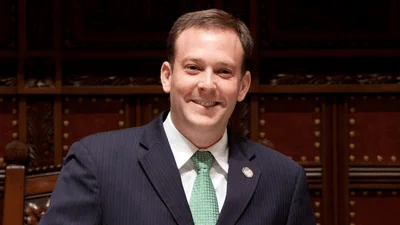Free 30- to 45-minute guided tours of Utah's Hanksville-Burpee Dinosaur Quarry are available in select weeks of May and June, the U.S. Bureau of Land Management announced May 1.
Tours are scheduled at 11 a.m., 1 p.m. and 3 p.m. Monday through Friday, 11 a.m. and 1 p.m. Saturday, May 15 through May 26 and June 5 through June 10, the announcement reports; no tours will be conducted on Sundays or from May 29-June 4. Reservations are on a first-come, first-served basis and groups are limited to 25 people.
"The Hanksville-Burpee Dinosaur Quarry offers a unique and exciting opportunity for the public to witness the unearthing and study of fossils of dinosaurs that roamed the area millions of years ago," David Mortensen, field manager at BLM Richfield, said in the release. "We encourage visitors to follow all rules and regulations, to respect the environment, and to recreate safely while in visiting the area."
The opportunity is thanks to a partnership between the BLM Henry Mountains Field Station in Hanksville and the Burpee Museum of Natural History in Rockford, Ill., according to the release. Burpee Museum educational staff will lead the tours to an active dinosaur excavation site, and share information on the geology and paleontology of the Late Jurassic period of Utah.
"Burpee Museum staff have conducted excavations at this site for many years to support long-term research initiatives, provide public access, and deliver educational and recreational opportunities," the BLM states in the release.
The bonebed is about 10 miles northwest of Hanksville and about a 30-minute drive from Highway 24. BLM recommends visitors travel in high-clearance vehicles because of the areas unimproved road conditions.
The bonebed has been attracting paleontologists and visits for decades, according to the Utah Geological Survey (UGS).
"The Hanksville-Burpee Dinosaur Quarry is a gigantic site," UGS states on its website. "It represents a large eastward flowing, braided-river channel with isolated dinosaur bones and many relatively intact skeletons shallowly buried in an area about a third of a mile long and 300 feet wide (roughly 10 acres)."
UGS reports five species of dinosaur were tentatively identified in the field, including a diversity of long-necked sauropods (Apatosaurus, Diplodocus, Camarasaurus, and perhaps Brachiosaurus) and Utah’s State Fossil, the carnivorous Allosaurus. The fossils indicate that younger animals dominate the site. Fossil freshwater clams and snails as well as fossil plants are also preserved at the site.





